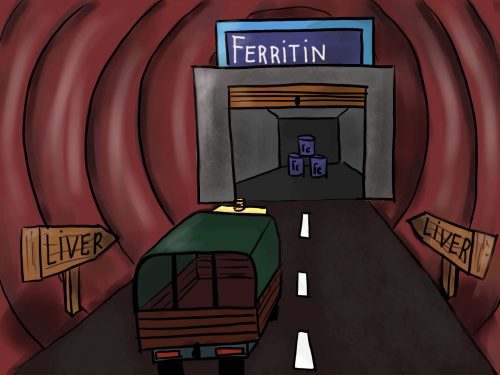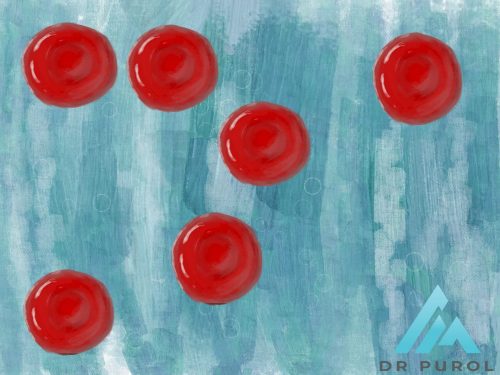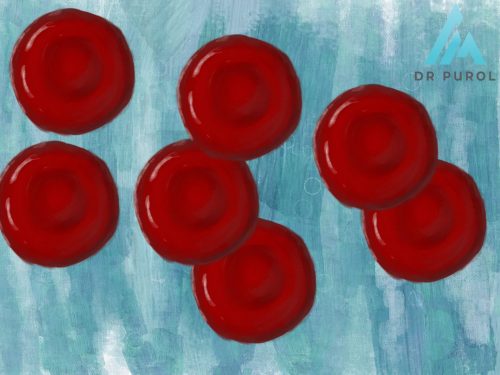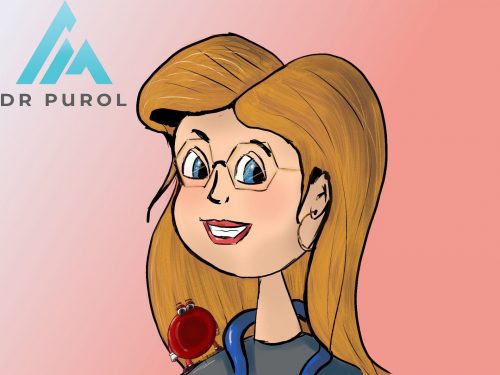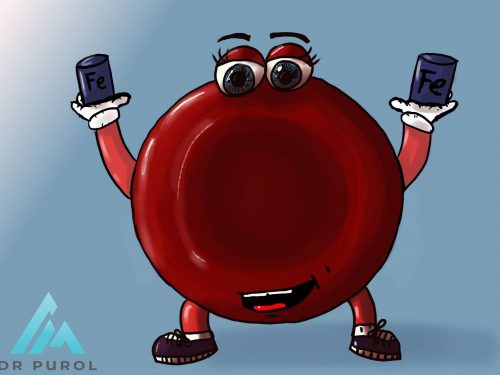
‘About a small red blood cell that wanted to be big’ – What does iron deficiency in children lead to?
Do you know that every fourth Polish child does not get enough iron in their diet? Today I will tell you what effect a chronic deficiency of this important element can have on the health and development of a child, when you should suspect that it may be missing and what tests should be performed to determine if the diet is sufficiently balanced?
Who and why is most at risk of iron deficiency?
Diversifying a child’s diet is often quite a challenge. The most iron is present in red meat, some vegetables, such as broccoli, kale, cabbage, beetroot, spinach. A lot of this element can also be found in legumes and products enriched with iron, e.g. porridges for babies. Therefore, it is easy to find such a deficiency in a child with a selective approach to food and among people on a plant-based diet. Additionally, a special group are premature babies, newborns from multiple pregnancies, newborns with anemia after delivery, after bleeding or after a serological conflict. In addition, a child after 1 year of age has a 4 times greater need for iron than an adult. That is why it is so important for children to eat foods that are highly nutritious.

What is iron for?
Iron is essential for the transport of oxygen to all cells in the body. The iron-containing hemoglobin molecules in red blood cells bind with oxygen, which is then distributed to all body tissues.
Iron supports the tissue regeneration process as well as the proper functioning of the immune and nervous systems. This element is also involved in the synthesis of various hormones, including, for example, thyroid hormones.

What does the iron balance in the body look like – what can be tested?
In order to make it easier to understand further concepts related to iron deficiency in the diet and its consequences, it is worth discussing first what parameters reflect its economy – these blood tests are ordered by the doctor.
- serum iron (Fe) level – it’s the amount of the element in the blood plasma – the test is performed on an empty stomach
- Transferrin- a protein that transports iron to tissues
- Ferritin – a protein that stores iron in the liver
- TIBC – Total Iron Binding Capacity (TIBC) – defines the maximum amount of iron needed to completely saturate transferrin
- peripheral blood counts – in particular the parameters of red blood cells: HGB, RBC, HCT, MCV, MCH. MCHC
What are the effects of iron deficiency?
- Chronic iron deficiency leads to anemia. This is when the number of red blood cells is lower than laboratory norms or there is a low level of hemoglobin in the blood. Thus, disturbances in iron metabolism are visible in the blood count.
- During diagnostics, we can also come across the concept of latent iron deficiency – this is a situation where the features of anemia are not yet visible in the morphology, but deficiencies in iron stores are visible – low ferritin and little iron in the peripheral blood.
What are the symptoms of chronic iron deficiency?
Iron deficiency leads to impaired concentration, problems in the development of cognitive functions, decreased physical fitness, and immunity disorders. The constant lack of that element leads to iron deficiency anemia, the symptoms of which in children are often nonspecific, and may include:
- pale skin and mucous membranes;
- irritability
- weakness or rapid fatigue – decreased exercise tolerance
- fast heart rate (tachycardia)
- concentration disorders
- appetite disorders manifested by the desire to eat unusual substances, such as, for example, soil, chal
- decreased appetite
- brittleness of hair and nails

How do we treat iron deficiency?
The decision on the type of treatment depends on the degree, the cause of the deficiency, and the age of the child. Sometimes it is enough to modify the lifestyle, but often we decide to supplement with an oral iron preparation. It is important that the decision on supplementation is made on the basis of blood tests – this allows you to monitor the effect of the treatment (every few months).
So if you have noticed any unusual symptoms in your child that may suggest anemia, discuss your concerns with your doctor!



